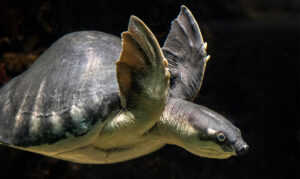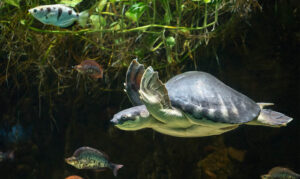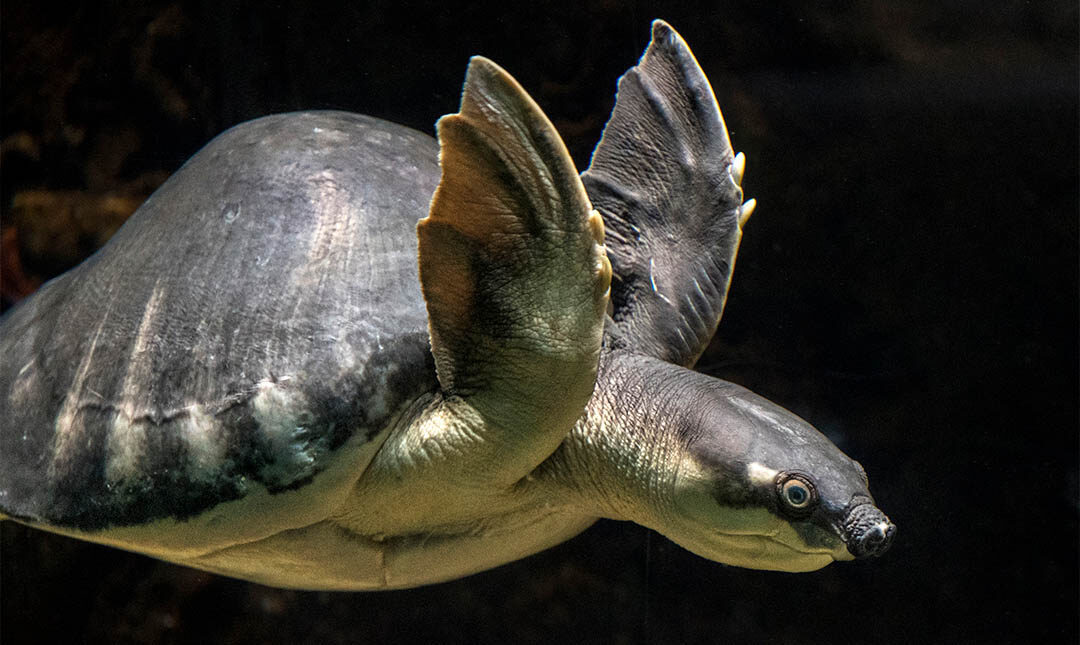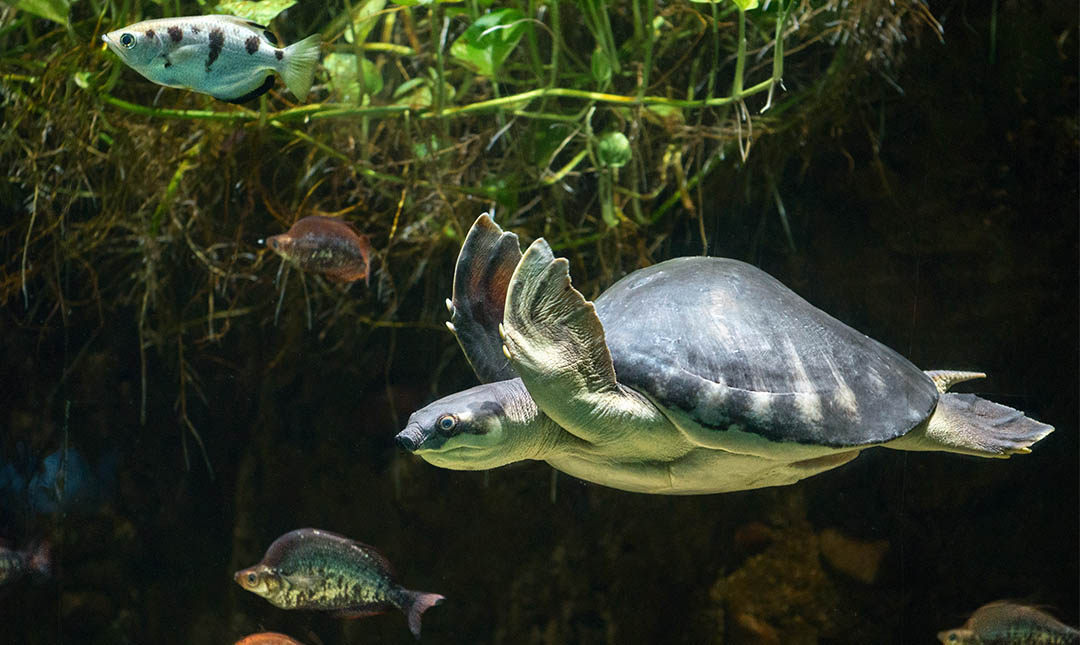About
This turtle’s lineage stretches back 70 million years to the Eocene period before dinosaurs became extinct. It is the last surviving member of its family. Seven-thousand-year-old aboriginal rock paintings in Australia depict turtles with pig-like noses. Scientists could not identify the animals in these images until 1886, when these turtles were discovered in the Fly River area of Papua, New Guinea.
Fly River turtles use their disk-shaped snouts for snorkeling. Their distinctive noses can detect scents underwater and help locate prey such as larvae, shrimp, and snails. Webbed flippers are more similar to those of sea turtles than other freshwater turtles. They use these to paddle and the back flippers to steer. In addition to breathing air at the surface through their noses, Fly River turtles are also able to breathe underwater by gulping water and absorbing the oxygen in the water. Similar to soft-shelled turtles, Fly River turtles’ shells are covered with a layer of rubbery skin.
Male Fly River turtles never leave the water, and females leave it only to lay eggs. Females travel together and communicate while seeking out the safest location to dig a nest on the sandy shore. Predators include monitor lizards and saltwater crocodiles. A nest is excavated with the hind limbs, eggs are laid, and the females return to the water, leaving the young on their own. Sex of the hatchlings is determined by temperature. A steady 90 degrees Fahrenheit will produce both males and females. Cooler temperatures produce mostly males. Warmer temperatures produce mostly females.
Populations in New Guinea have declined almost 60 percent in the past 30 years, largely due to human consumption and the international pet trade. In Australia, threats include habitat degradation due to pollution from mining and a decrease in water levels due to agricultural use.


Habitat
The Fly River turtle is almost entirely aquatic, making its home in the rivers, lakes, swamps, and pools of northern Australia and southern New Guinea.
Diet
Fly River turtles are omnivorous but prefer fruits and leaves.
Physical Characteristics
This turtle grows to be very large, attaining a weight of up to 50 pounds and a length of about 22 inches. Females are a bit larger, but males have a longer, thicker tail. Lifespan is estimated at 35 to 40 years.
LOCATION WITHIN THE ZOO
You’ll find this animal in an aquarium in the LAIR. See Zoo Map.


